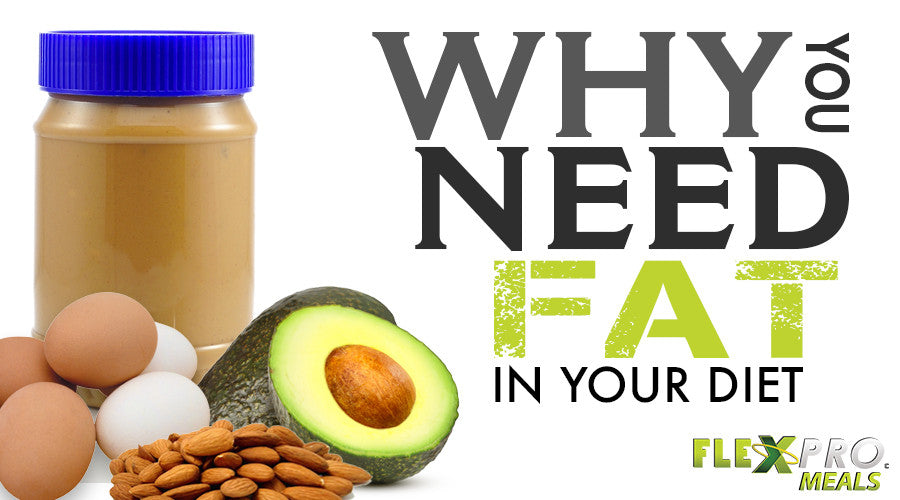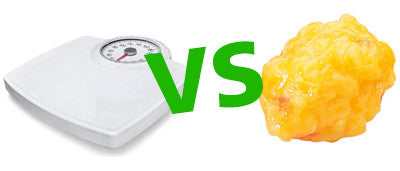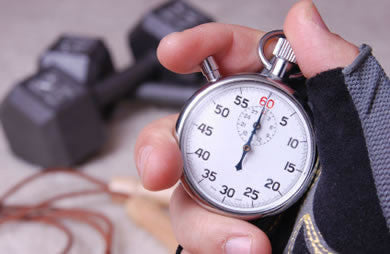Your cart
Order special instructions
Discount
Discount invalid. Please make sure the discount details are correct.
Discount code is already applied.
Discount applied!
FLEXPRO CONNECT

FLEXPRO CONNECT
by Nathan Corn on Mar 16 2016
If It Fits Your Macros, or IIFYM as the “fitness crowd” calls it is relatively new as a meme, formerly known as “flexible dieting” but the dietary principles have actually been around for quite some time in the fitness world.
IIFYM, or flexible dieting, is a method of dieting that revolves around meeting daily macro nutritional intake targets, and not on what you eat to get there. It’s essentially a form of calorie counting (a gram of protein and carbohydrate both contain about 4 calories, and a gram of fat contains about 9). Tracking Your Macros
How Many Calories should I eat per day?
How many grams of protein should I consume per day?
How many grams of carbohydrates should I consume per day?
How many grams of fat should I consume per day?
*Need help calculating?! Check on our pasts posts and Keep an eye out for future blogs where we teach you how!

FLEXPRO CONNECT
by Mackenzie Diekmann on Feb 11 2016
For decades, fat has been a dirty word when it comes to talking about a healthy diet. When people are trying to lose weight, fat is usually the first thing to be cut, hence the "Low Fat" revolution that began almost 20 years ago. While it is true there are fats that will make you, well... fat, there are also good fats that greatly benefit your body. Here are a few benefits of healthy fats:
Great source of energy
Helps the body to absorb vitamins and nutrients
Essential for blood clotting
Essential for muscle movement
Helps inflammation
Prevents & treats heart disease
Reduces cholesterol
Lowers blood pressure
Helps prevent belly fat
Boosts brain function
May reduce risk of dementia
Types of Fats: The Bad Trans Fat- Also known has "partially hydrogenated oil", trans fat has, up until recently, been found in everything from cookies to fast food. Studies have shown that trans fat has zero health benefits and is linked to multiple chronic conditions including high cholesterol, heart disease, diabetes and stroke. For this reason, the FDA has required the food industry to list trans fat out on a separate line in the nutrition info on packaging, resulting in many food companies expelling trans fat from their food altogether. Saturated Fats- This type of fat is commonly found in whole milk, red meat, cheese, coconut oil, baked goods, and more. While our bodies do require us to have some saturated fat, the balance can be easily tipped in favor of quickly becoming too much. Most nutrition experts recommend that saturated fat make up no more than 10% of our daily calories because it has been linked to raising harmful cholesterol and forming artery blockages.
The Good: Monounsaturated Fats- Peanut oil, avocados, sunflower oil, olive oil, canola oil, and nuts are foods that are abundant in monounsaturated fat. This type of fat has been linked to many heart healthy benefits, so much so, that nutrition experts recommend replacing trans and saturated fats with monounsaturated and polyunsaturated fats. Polyunsaturated Fats- This type of fat is known as an essential fat, meaning your body needs it but can't produce it on it's own. You can provide polyunsaturated fat for your body by eating foods rich in omega- 3 fatty acids like salmon, sardines, walnuts, canola oil, flaxseeds, and more. Eating or supplementing omega-3 fatty acids have tons of health benefits including lowering blood pressure, raising good cholesterol, reducing heart problems, helping to relieve arthritis, boosting brain function and possibly even preventing dementia. Swap Good Fats into your Diet Here are a few ways to start implementing good fats into your diet while taking the bad out:
Trade regular bacon for turkey bacon
Opt for real butter over margarine
Add avocados to your salads and other foods like tacos
Make sure your peanut butter and other spreads don't contain hydrogenated oil
Take a fish oil or flax seed supplement daily
Stay away from fast food and processed foods as much as possible
How do you integrate the “good fats” into your healthy diet? Let us know in the comments below!

FLEXPRO CONNECT
Losing Weight vs. Losing Fat - What's the Difference?
by Mackenzie Diekmann on Feb 03 2016
Weight loss and fat loss are two huge buzzwords used in our society today. It seems like everywhere you turn there are products or services promising you weight loss or fat loss. Often, these two terms are used interchangeably even though they don't necessarily mean the same thing. But how are they different? Let's talk about losing weight vs. losing fat and what exactly the difference is! Let's Clear Some Things Up:
Weight Loss: When you lose body weight, which is the sum of your muscle, fat, skin, hair, bones, organs, etc.
Fat Loss: A more specific type of weight loss that occurs when only your body fat decreases.
The Problem with the scale: Most people wanting to lose weight are actually only wanting to lose body fat. When they step on the scale and see their weight fluctuating for other reasons like hormone changes, water retention, muscle gain/loss, etc., they become discouraged and confused when in reality the scale is just not a reliable tool to calculate body fat percentage. Clothes, mirrors, and pictures are all better indicators of fat loss than a scale. A tool that can help you accurately track your fat loss progress is a fat caliper. It's a cheap and easy way to measure your body fat percentage. The table below shows the ideal body fat % for men and women according to The American Council of Exercise (ACE):
Women
Men
Minimum Fat Needed to Live
10-13%
2-5%
Professional Athletes
14-20%
6-13%
Fitness Junkies
21-24%
14-17%
Average
25-31%
18-24%
Overweight
32% and up
25% and up
Train to Lose Fat, Not Muscle! Part of the fat loss equation comes with the time you put in the gym. Many people who want to lose fat quickly do tons and tons of cardio all day, every day. Cardio is great, but like all things, too much of a good thing is not so good. Doing only cardio can result in muscle loss instead of fat loss. Instead a better/smarter way to exercise is to do weight training while adding in some cardio a few days/week. HIIT Training is a great cardio option for you to add into your fitness regime. Click here to lean more about HIIT!! The Bottom Line
When it comes to losing body fat, what you eat is 75% of the battle. Eating junk, eating too much, or even eating too little can hinder any fat loss program no matter how hard you train.
Don't let the scale get you down-- you can still be losing body fat and making progress even if the scale is not moving or going up!
FLEXPRO CONNECT
10 Reasons You Should Eat Breakfast Everyday
by Mackenzie Diekmann on Dec 10 2015
For many people, mornings can be super crazy and hectic. Getting the kids up and ready, getting yourself showered and dressed, and getting off to work on time can be super challenging. This often leaves little, or no, time to fit breakfast in. However, there are many reasons breakfast is called the most important meal of the day. Here are 10 reasons why you should eat breakfast everyday:
1. Helps with weight loss and maintaining healthy weight 2. Helps control hunger throughout the day 3. Helps keep healthy blood sugar levels 4. Gives you more energy throughout the day 5. Helps your short-term memory 6. Increases concentration 7. Improves cholesterol levels 8. You are 4.5 times less likely to become obese 9. Reduces risk of Type 2 Diabetes & Heart Disease 10. Elevates your mood
As you can see, eating breakfast has some pretty great benefits. What prevents you from getting this important meal?
Have you tried our FlexPro healthy meal delivery? We help make consuming a healthy breakfast so easy, all you have to do is heat and eat! Regardless, it’s worth finding a way to fit breakfast into your busy scheduled!
FLEXPRO CONNECT
12 Benefits of Cayenne Pepper & How to Add It to Your Diet
by Mackenzie Diekmann on Dec 10 2015
It's not just a way to spice up your food!
Most people only know cayenne pepper as a spice that can add a little fire to any dish. But did you know that this spicy pepper has been used for hundreds of years for tons of other health benefits?
Here are 12 benefits of cayenne pepper and how to add it to your daily diet:
Weight Loss- Studies of shown that cayenne pepper is a natural appetite suppressant and metabolic booster which will help your body not only take in fewer calories, but also burn more calories!
Prevents Migraines- Cayenne may help to prevent migraines because it has the ability to decrease your perception of pain.
Cold & Flu Remedy- Cayenne has been shown to aid in breaking up mucus caused by cold and flu.
Allergy Relief- Forget the expensive over-the-counter meds, cayenne is a cheap and easy way to relieve those allergy symptoms.
Prevents Blood Clots- Cayenne prevents the formation of blood clots, which can aid in reducing your chance of heart attack and stroke.
Cancer Prevention- Cayenne has been shown by studies to prevent tobacco-related lung cancer, but that doesn't mean we are encouraging you to smoke!
Toothache Remedy- Cayenne is a great way to battle tooth & gum disease.
Topical Agent- For many years, cayenne has been used to treat topical issues like snakebites, wounds, sores, and more.
Detox Support- Cayenne heats the body and causes you to sweat which are important steps in releasing toxins from your body.
Anti-Bacterial- Cayenne has been used as a natural food preservative because of it's anti-bacterial properties
Joint Pain Relief- Cayenne contains something called capsaicin, which has been shown to give joint pain relief.
Digestive Aid- Cayenne stimulates your digestive tract which helps your body to digest foods easier and is also useful in relieving gas.
With all of these great benefits, there's no reason not make cayenne a part of your daily life. Getting your daily cayenne intake is easy! Add it to one of your meals or mix cayenne tea with lemon juice and honey to create a great detoxifying morning beverage. If you don't particularly enjoy the taste or heat of cayenne, you can get it in pill form from most stores that sell supplements!
Do you add cayenne pepper to your daily diet? Share below your favorite ways to integrate this beneficial spice!

FLEXPRO CONNECT
How Long Should I Workout? Find Out With FlexPro!
by Mackenzie Diekmann on Dec 10 2015
The plain and simple answer to this question is: there is no answer. There are too many variables that go into how long you should workout to have one definitive answer that holds true for everybody. Some fitness experts will tell you to do 45 minute workouts everyday; no more, no less. This may be the best route to go for some people - but not all people are the same. Therefore, you have to listen to your body and figure out what works best for you with a little trial and error.
Here are some things to consider when trying to figure out the duration of your workout:
Experience Level- Are you a newbie to the world of fitness, a seasoned muscle head, or somewhere in between? If your body isn’t accustomed to the punishment getting in shape involves, your workouts should probably be short and to-the-point (anywhere from 20-30 minutes) to begin with. Once you start noticing that you are becoming stronger, you can either start bumping up the length and/or intensity of your workouts.
Fitness Goals- The types of workouts you do should be directly related to your fitness goals. If you're wanting to gain mass, then you will probably be doing a lot of high volume weight training routines which all vary in length according to how long your breaks are and what muscle group you are targeting that day. If you are training to be more athletic, some of your workouts, like plyometric or HIIT routines, will be shorter due to the high level of intensity.
Intensity- The intensity of your workout is a huge determining factor in how long you should workout. When weight training, some people can go for longer periods of time (1-1.5 hours), especially if they are taking long rests in between sets. In contrast, some CrossFit workouts only last 8 minutes, but they are so intense that you often won't be able to peel yourself off the floor for the rest of the day. The thing to consider here is, did you push your body to the point of extreme fatigue? This is what causes you to change and become stronger. Remember, quality over quantity!
Personal Time Constraints- Some people have crazy, hectic lives that only leave them a small allotment of time to get a workout in. If you're one of those people that only have a tiny window of time to workout, doing a 20-30 minute workout is way better than doing nothing at all. The good news is, studies have shown that short, but intense workouts can burn the same amount of calories as a longer workout due to something called the after burn effect. This means you'll continue to burn calories at an accelerated rate even after you're done working out if the intensity was high enough.
The key thing to remember is what works for someone else may not necessarily work for you. Listen to your body and happy working out!

FLEXPRO CONNECT
Pull-ups - Why We Do Them and You Should Too!
by Mackenzie Diekmann on Dec 10 2015
Pull-ups have long been considered one of the most fundamental exercises in creating a strong back and that ever-coveted V-taper many guys desire. Being able to preform pull-ups is considered by many organizations, like the military, to be an indicator of superior physical fitness. However, pull-ups provide a lot more benefits than just looking good and impressing people. Here are just a few of our favorite benefits: 1. Compound Upper Body Move- Not only do pull-ups target your upper-back muscles, your biceps, forearms, shoulders, & core also come into play when preforming a pull-up. 2. Variation Variety- There are tons of pull-up variations you can do all depending on your hand placement. Each type targets your muscles differently. For instance, a chin-up incorporates more biceps while a close-grip pull-up targets more of your forearms. 3. Increasing Intensity is Easy- As with every other exercise, you must continually increase the intensity in order to grow and avoid a plateau. Pull-up intensity can be easily increased by simply doing more reps or adding weight with a weighted belt or vest. 4. Increased Heart Rate- Pull-ups use large muscle groups, so they will have your heart rate pumping in no time! 5. Increase Grip Strength- Pull-ups are one of the best ways to increase grip strength which comes in handy for other weight-training exercises and climbing. 6. Convenient- Pull-ups can be done almost anywhere. You don't need thousands of dollars worth of gym equipment to do this exercise-- just your body, a bar, and gravity.
Don't Have Access to a Pull-up Bar?
Doorframe pull-up bars are relatively inexpensive and work great!
Check out your local running trail. Many of them have outdoor workout stations that include pull-up bars.
Head to the nearest playground and use the monkey bars.
If you have an open beam ceiling in your basement, use the beam as a pull-up bar
Head outside to your patio and use the edge of the deck or railing
Do you integrate pull-ups in your workout routine? Tell us how in the comments below!

FLEXPRO CONNECT
by Mackenzie Diekmann on Oct 05 2015
Get Ready to Burn More Fat in Half the Time!
If you've been to a gym or opened a fitness magazine lately you've probably have at least heard of the word HIIT, but what the heck does HIIT even mean? HIIT stands for High Intensity Interval Training, and it has very quickly become one of top trending ways to burn fat. Why? Because if done correctly you can burn up to 9 times the amount of fat than a traditional steady-state cardio workout would!How is it Done?HIIT is done by alternating high intensity exercises with low intensity exercises (or resting) for a set amount of time (20-60 seconds) and can be done with pretty much any bodyweight exercise including running, squatting, lunging, kicking, punching, jump roping, & more! Benefits of HIIT
Metabolism Increase- HIIT will speed up your metabolic rate for up to 48 hours after you've finished working out.
Fast & Convenient- Most HIIT routines are less than 30 minutes and you can literally do it anywhere since little to no equipment is required. Gone are the days of not having time to workout!
No Equipment Required- The only weight you need for HIIT is the weight your own body supplies. Most moves in HIIT routines use bodyweight exercises; although, feel free to add weighted moves to up the intensity.
Burns More Fat While Retaining Muscle- Studies have shown that over a 20 week period, people who consistently did HIIT routines burned 9 times the amount of body fat and retained more lean muscle mass over the people who just did low intensity, steady-state cardio.
Ready to give HIIT a try? Here are few example workouts for you to give a go!10 Minute Beginner HIIT Workout 3 rounds- 20 seconds high intensity, 10 seconds rest
Jumping Jacks
Squats
Jab, Cross (Right Side)
Jab, Cross (Left Side)
*30 seconds of rest in between each round
Advanced HIIT Workout3 Rounds- 45 seconds high intensity, 15 Second Rest
Burbpees
Jumping Lunges
Tricep Dips
Side Lunges
Push-ups
Tuck Jumps
Mountain Climbers
*1 minute of rest in between each round
Have you tried HIIT Before? Let us know your favorite workout in the comments below!
